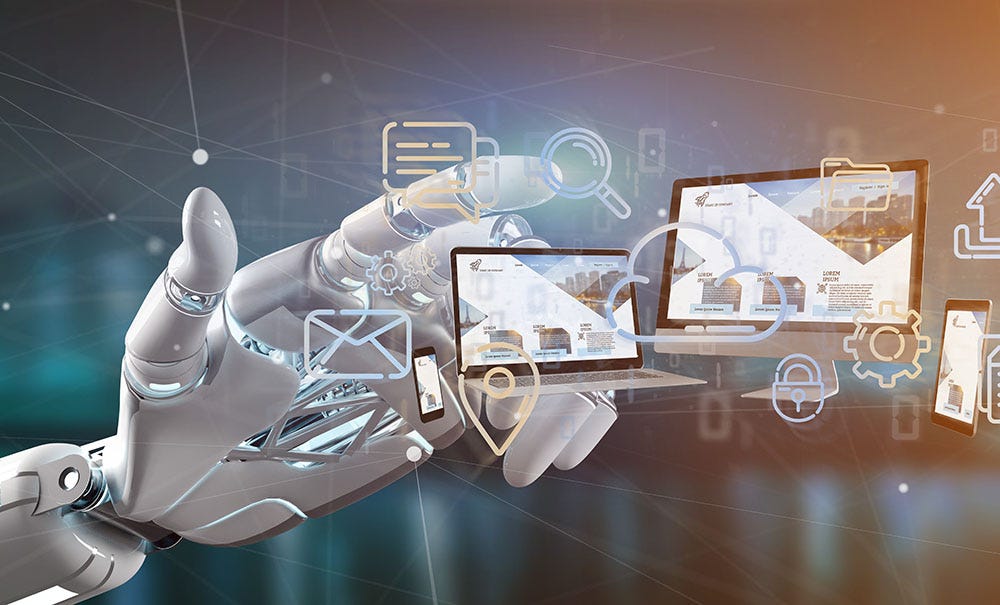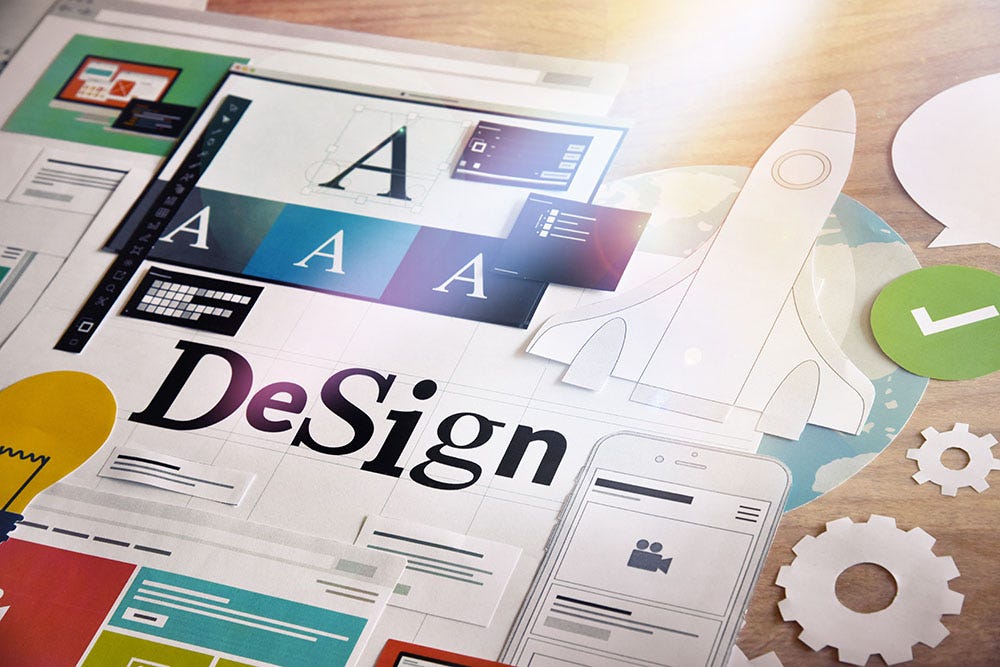Latest news about Bitcoin and all cryptocurrencies. Your daily crypto news habit.
 Photo: Production Perig / Adobe Stock
Photo: Production Perig / Adobe Stock
Back in 1993, the introduction of the Mosaic graphical web browser touched off a revolution in the way the public experienced and used the growing internet. Ever since, web designers the world over have worked continuously to establish and refine what solid UX design means online. Some of the evolutions have been the result of advancing technology, such as the rise of broadband internet enabling multimedia content, or the development of the HTML5 standard. Others have come from data-driven studies of what works and what doesn’t and an iterative process to reach perfection.
Any way you look at it, however, the field of web design has spent the last 25 years growing and changing our collective vision of what the internet can and should look like. Now, there’s a new technology revolution — the rise of artificial intelligence — that is already poised to upend the web design industry much faster than anyone could have anticipated only a few short years ago. Here’s a look at the ways that AI is already changing the web design industry, including its current strengths, weaknesses, and where it may be heading next.
AI as a UX Element
 Photo: Chaosamran_Studio / Adobe Stock
Photo: Chaosamran_Studio / Adobe Stock
The first and most obvious way that AI is changing the face of modern web design is in the myriad AI tools that are becoming standard parts of modern design. The most obvious example of it is in the explosion of chatbots that became a fixture on almost every web property in the past few years. In theory, they’re meant to bridge the gap into a whole new kind of web interface, one powered by conversation rather than touch or click. In the beginning, chatbots relied on little more than simple, pre-programmed conversational pathways that determined the extent of their usefulness. That lead to some pretty disappointing results, but the latest chatbots now use sophisticated natural language processing (NLP) systems to create meaningful conversations with visitors that don’t follow a scripted path. Now that these new AI chatbots are reaching maturity, they are all but certain to enjoy a resurgence in the very near future.
AI as the Designer
A much bigger and more consequential way that AI is changing web design is by beginning to supplant the designers themselves. A growing field of artificial design intelligence (ADI) tools is doing just that and powering a fundamental shift in the way websites are built. Once again, however, the earliest examples of ADI systems have been underwhelming, much like the early chatbots. The most well-known example is The Grid, which aimed to be the first one-stop-shop in AI web design with its automated web builder named Molly. After making a splashy debut, their technology didn’t live up to the initial hype. Since then, however, several ADI systems have evolved into what could turn out to be transformative tools. Offerings from Wix and Bookmark now do a credible job of creating websites in mere moments, with plenty of options for further customization afterwards. Within a few years, it’s easy to see them grabbing an ever-larger share of the overall web design market.
AI Informing Results
AI isn’t only being used to create elements and designs; it’s also being leveraged in the all-important process of figuring out what designs work best and how to refine them. To that end, a variety of AI-powered analytics tools have appeared to help web developers gain real insights into how their designs are working in real time. Those insights are enabling companies like Convincely to deliver data-focused CRO services that help web properties maximize their impact with consumers. In the process, AI is supplanting long-standing iterative design practices like A/B testing, which used to be the primary method of improving site design to drive results. It’s also important to realize that this is an area that’s a natural fit for AI since it’s all about data and pure analysis. That should mean that it’s also an area where we can expect to see more developments and bigger breakthroughs in the very near term.
The Future of AI in Web Design
Judging by the applications of AI that have already had an effect on modern web design, and the speed at which they are still developing, it’s clear that we’ve only seen the beginnings of the disruptive force that the technology will exert in the industry. Going forward, it’s a virtual certainty that AI will take a primary role in every facet of web design and development, and will enable and drive new shifts in what is considered the state of the art in web design. For example, as NLP becomes more powerful, it is likely that voice interfaces will become the new normal on the web.
In addition, AI also seems primed to power the next generation in website personalization, which could change the nature of the internet forever. Imagine encountering websites that will adapt themselves to provide a perfect experience on a user-by-user basis, rather than continuing the one-size-fits-most approach that’s common today. That may well be possible through an evolution of the AI tools that power today’s ADI platforms and analytics systems. Once that happens, the internet will become a fluid, user-centric place that takes on a life of its own — and who would have ever predicted that only 25 short years ago?
AI is Having a Big Impact on Web Design, and it’s Only the Beginning was originally published in Hacker Noon on Medium, where people are continuing the conversation by highlighting and responding to this story.
Disclaimer
The views and opinions expressed in this article are solely those of the authors and do not reflect the views of Bitcoin Insider. Every investment and trading move involves risk - this is especially true for cryptocurrencies given their volatility. We strongly advise our readers to conduct their own research when making a decision.
